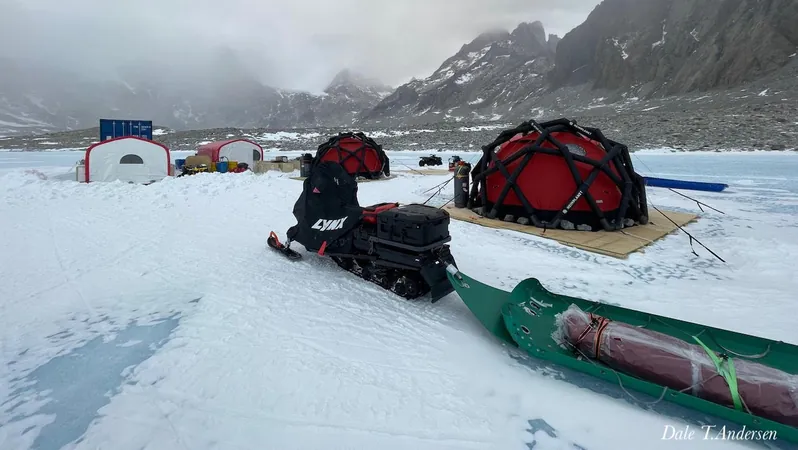
Dive into the Unknown: Dale Andersen's Latest Astrobiology Adventure in Antarctica
2024-11-03
Author: Wei
Introduction
Astrobiologist Dale Andersen has returned to the frigid landscape of Antarctica, specifically Lake Untersee, for yet another thrilling field season dedicated to researching extraterrestrial life and the extreme conditions that sustain it. Andersen's work, organized under the auspices of the SETI Institute, is poised to unravel some of the mysteries of life in one of Earth's most inhospitable environments.
Setting Up Shelter
Today marks a significant milestone in the expedition, as the team successfully set up their final shelter provided by Alaska Structures. This compact 8x10 ft Weatherport will serve not only as a gear storage area but also as a crucial workspace for the maintenance of critical equipment such as portable generators. With weather conditions becoming increasingly unpredictable, this sheltered space is essential for protecting valuable research instruments and providing a productive work environment amidst Antarctica's harsh climate.
Monitoring Weather Conditions
As the team works diligently, they are closely monitoring the weather. Today’s conditions have included low clouds and light snowfall, paired with intermittent powerful gusts of wind. Although forecasts indicate that extreme wind events are unlikely, the team remains vigilant in this isolated region. Remarkably, the strongest gusts of 42 mph did not strike until after the shelter had been secured, allowing the team to safely move essential items indoors for protection.
Incubation Experiment
Yesterday, the scientists made significant progress by setting up Dan's incubation experiment in the south basin. Despite battling fierce winds while lowering the line into the lake, the setup went smoothly, and the incubation process is now fully underway, expecting to yield valuable data over the coming month.
Future Plans and Technology
Looking ahead, once weather conditions permit, the team is eager to dive deeper into their scientific pursuits. Top of the agenda is creating a dive hole, along with a substantial amount of surveying work. To accomplish these tasks, they are armed with state-of-the-art technology, including sub-centimeter RTK precision using their Trimble GNSS system with the R12i and R9s base station, an SX10 scanning total station, and a Mavic 3E mapping drone. The integration of such advanced equipment promises to enhance their data collection and analysis significantly.
Conclusion
Dale Andersen's mission isn't just about survival in a hostile environment; it is an intricate dance with the unknown, where each breath taken on this alien terrain brings researchers closer to understanding life's potential beyond Earth. With so much at stake and the limits of human endurance constantly tested, this expedition is shaping up to be an extraordinary chapter in astrobiology.
Stay tuned for more updates as this remarkable expedition unfolds at Lake Untersee, where the quest for knowledge continues amidst the icy embrace of Antarctica!





 Brasil (PT)
Brasil (PT)
 Canada (EN)
Canada (EN)
 Chile (ES)
Chile (ES)
 España (ES)
España (ES)
 France (FR)
France (FR)
 Hong Kong (EN)
Hong Kong (EN)
 Italia (IT)
Italia (IT)
 日本 (JA)
日本 (JA)
 Magyarország (HU)
Magyarország (HU)
 Norge (NO)
Norge (NO)
 Polska (PL)
Polska (PL)
 Schweiz (DE)
Schweiz (DE)
 Singapore (EN)
Singapore (EN)
 Sverige (SV)
Sverige (SV)
 Suomi (FI)
Suomi (FI)
 Türkiye (TR)
Türkiye (TR)